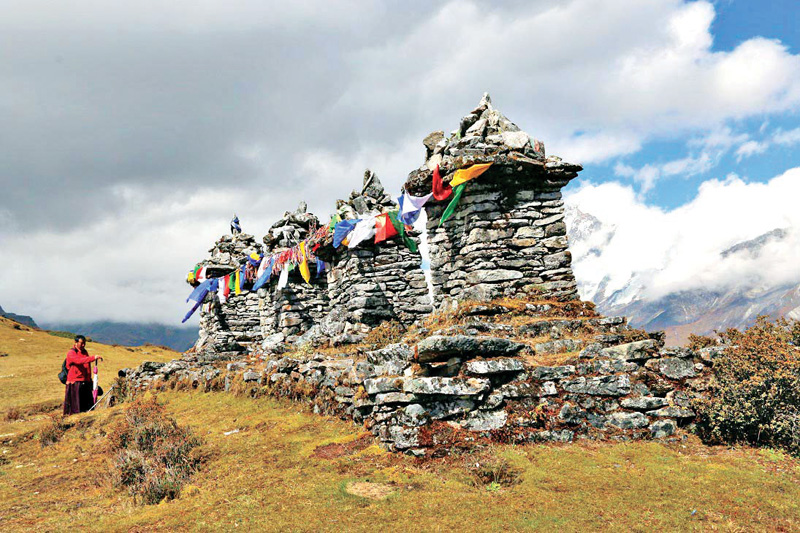Yielding to nature
Instead of talking of strength to fight against nature, we should be contemplating on how to persist by yielding and supplicating
Gangtok
The trek from Yuksom up to Dzongri in the Kangchendzonga National Park in Sikkim is rather a tough climb from 1,780 m to around 4200 m. The vegetation changes from subtropical lush forests to sub-alpine shrub.
The intensity of the landscape is breath-taking especially when reaching locations from where one sees the mountains. The majestic Kangchendzonga, the third highest mountain in the world at 8,586 m, is flanked by the peaks of Kabru and Pandim.
This humbling landscape has been the inspiration and spiritual source for the identity of Sikkim. The Buddhist scriptures state that in the eighth century Guru Padmasambhava, the founder of Vajrayana Buddhism, entered Sikkim from the northwest to declare the land Beyul Demojong or the ‘hidden fruitful valley’.
Treasures and scriptures were hidden in the mountains and Kangchendzonga was given the task of guarding these treasures.
The five peaks of Kangchendzonga are said to contain the five treasures of salt, gold and turquoise, Buddhist scriptures, arms and the last being medicine and seeds.
In the 17th century the hidden land was visited by three Nyingma masters: Lhatsun Chenpo, Kathog Rigzin Chenpo and Ngadak Sempa Chenpo. Of these, Lama Lhatsun Chenpo who cut his way through the Singalila Range and crossed the Kang La from Nepal into the hidden land had the greatest influence.
He performed an elaborate thanksgiving ritual dedicated to Dzonga who lives in Mount Kangchendzonga and is the protective deity of Sikkim.
This has been minutely documented in the Denjong Nay-Sol ritual text which is read by the monks in the monasteries throughout Sikkim.
Additionally the Nay-Yik text provides information on natural features along specific routes. This guides those performing rituals or pilgrimages through the landscape with information on the sacred lakes, caves, rocks and even trees. The Pang Lhabsol is such a ritual which is celebrated towards the end of the monsoon season in chosen monasteries such as Pemayangtse and the monks take a pilgrimage through the sacred landscape giving prayer and offerings at designated locations.
The Pang Lhabsol celebrates the guardian deity Dzonga and Kangchendzonga invoking peace and prosperity. As the monks move through the pristine landscape they follow strict rules on behaviour ensuring that the environment is not disturbed or harmed.
It is such reverence to nature that allows for conservation to take place.
This spiritual relationship with the landscape is based on a deep rooted understanding. When a research scientist from the Wildlife Institute of India (WII) was setting up camera traps to document the elusive wildlife in the park, he was very successful because the locals told him were to place them.
This shows that it is not blind faith, but knowledge of their environment. This has been closely entwined in the cultural activities of the local inhabitants.
The earthquakes of September 2011 and April 2015 caused a great deal of damage to the monasteries in Sikkim. This includes Dubdi Monastery in Yuksom which was built in 1701 and is the oldest monastery in Sikkim. Extensive damage was also done to the important monasteries of Pemayangtse and Tashiding. The work being carried out there in response to the earthquake damage can hardly be considered to be restoration, however, the celebrations and rituals continue with added zest.
Here we see the struggle of humans to persist with their cultural endeavours to withstand the might of the natural powers. The deep knowledge of construction gained over centuries is often forgotten. Just as the success of the WII
research scientist with positioning of his camera traps depended on local knowledge, so are the experts in construction dependent on local knowledge.
If only the modern experts would be aware of this and acknowledge their shortcomings. Instead of talking of strength to fight against nature, we should be contemplating on how to persist by yielding and supplicating.
(The author is an architect and can be contacted through paharnepal@hotmail.com)






